We have all heard of the 5 senses, but did you know that Montessori actually focuses on the refinement of the 9 senses?
In this article, I will go over what these nine senses are and give examples of Montessori activities that aim at their refinement.
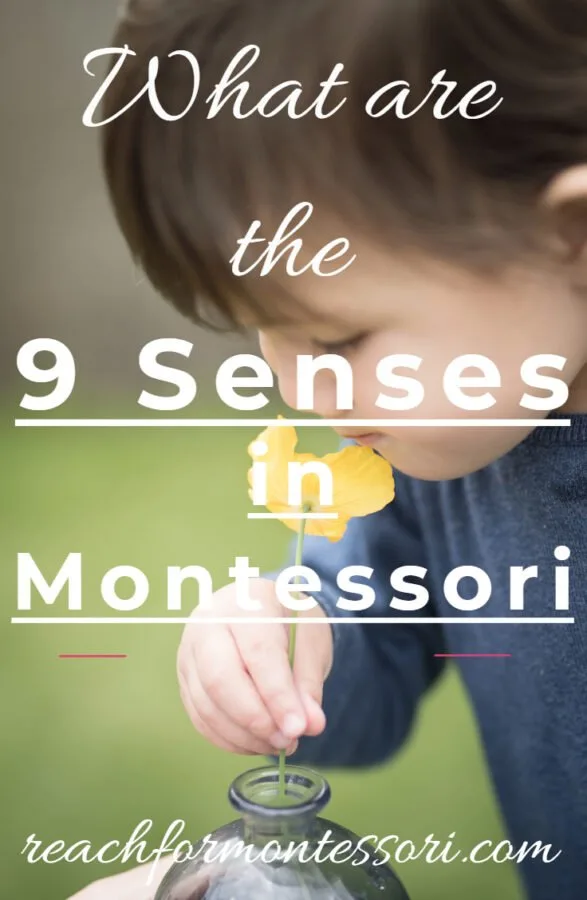
What are the 9 senses in Montessori?
In Montessori, children learn through their senses. When children enter a Montessori classroom around the age of 3, they have moved past the stage of indiscriminate exploration of their environment and are ready to explore in a more refined manner.
It sometimes comes as a surprise to people, when reading about Montessori sensorial materials and activities, that Montessori focuses on nine senses instead of only five.
Montessori sensorial materials and activities were designed with the following nine senses in mind.
Tactile (touch)
Maria Montessori believed that “What the hand does, the mind remembers“.
Hands-on learning is a tenet of Montessori. Children in Montessori learning environments are encouraged to explore and manipulate the materials via touch.
No Montessori material exists that does not include a tactile element.
Examples of Montessori tactile activities:
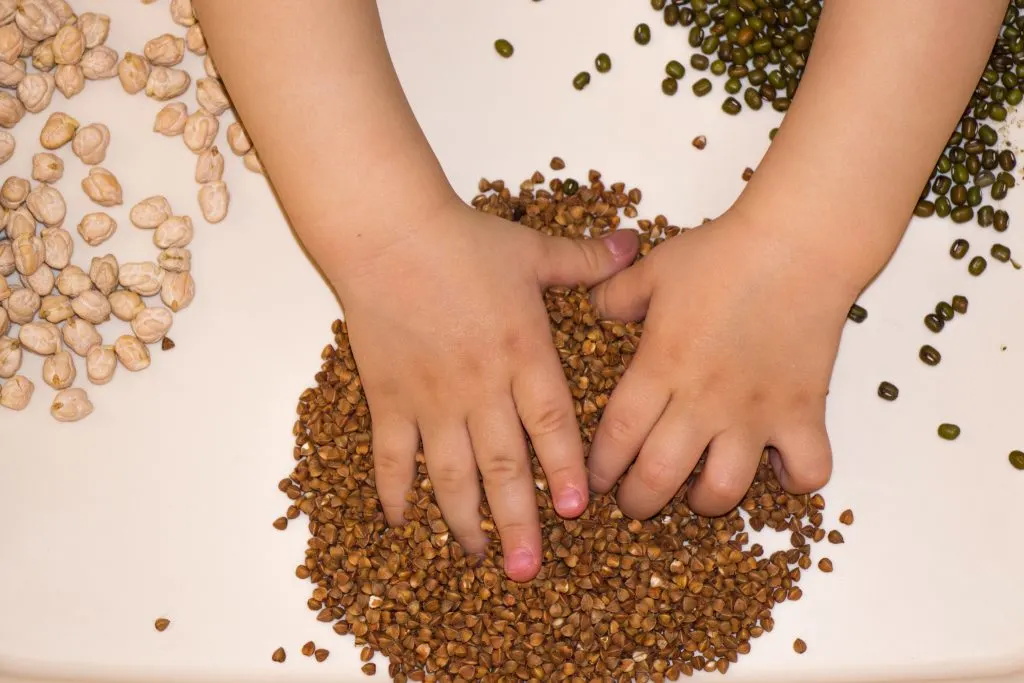
Baric (weight)
Baric sense is the ability to tell the difference between the weights of various objects.
Activities that encourage the development of this sense also introduce the concept to children that objects of the same size can have different weights.
Examples of Montessori baric activities:
Olfactory (smell)
Being able to differentiate between smells is an important skill. Our olfactory sense can alert us to unpleasant or even dangerous situations.
The sense of smell is also closely linked to emotion and memory.
Examples of Montessori olfactory activities:
- Smelling bottles
- Spice cabinet exploration
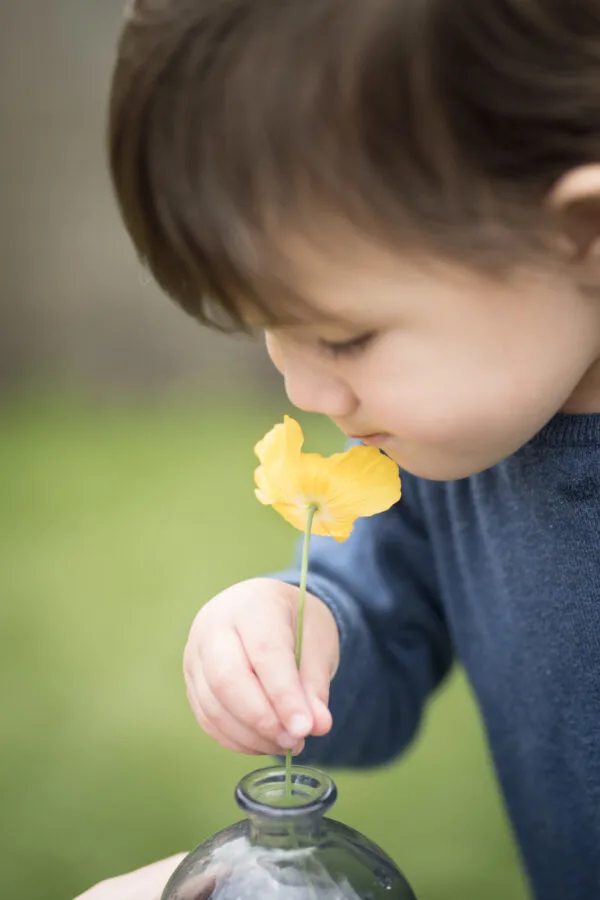
Thermic (temperature)
Thermic sense is the differentiation of temperatures. Refinement of temperature sensitivity is important for all children.
In Montessori learning and home environments where children will be involved in Practical Life exercises, such as unloading a dishwasher after it has been on a heated setting or helping with cooking on a stove, thermic sense has an added level of importance.
Examples of Montessori thermic activities:
Muscular (kinesthetic)
Montessori activities don't start when a child picks up the materials from a table or mat.
They start from the time a child walks to the basket of mats and unrolls it onto the floor.
From that point, a child must then walk over to the shelf and carry the work material over to the mat.
Certain activities require a child to make multiple trips to the shelf, carrying the material piece by piece, lengthwise with one hand at each end of the material, to the work area.
Examples of Montessori muscular activities:
- Walking the Line
- Moving a chair quietly
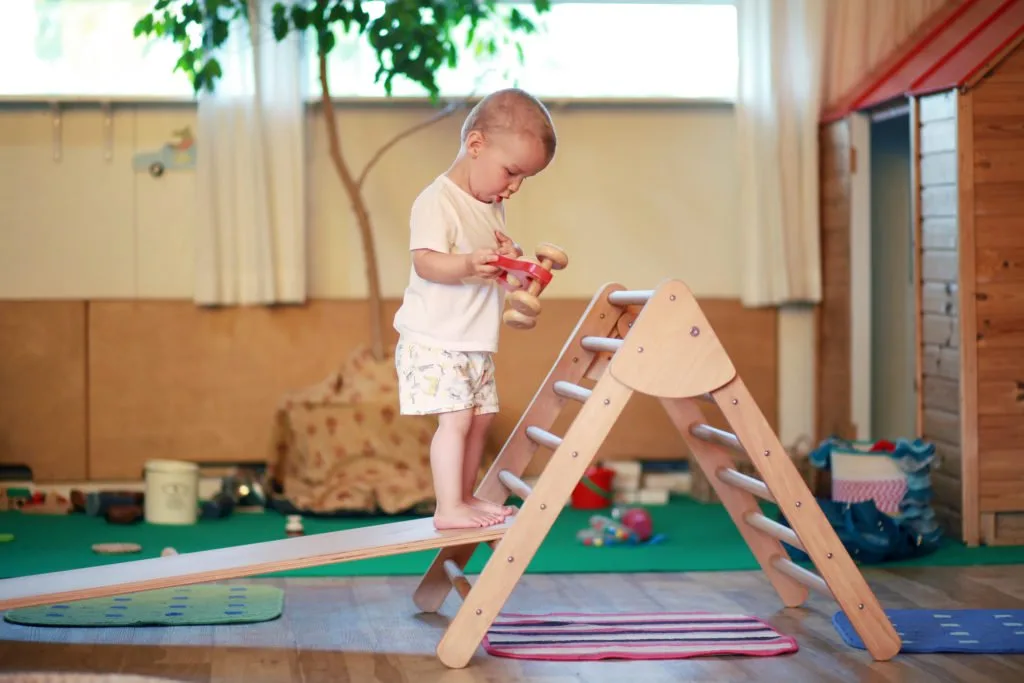
Gustatory (taste)
The gustatory sense is the ability to tell the difference between flavors. In Montessori classrooms, tasting activities are presented in ways that isolate the gustatory sense.
Practical Life Activities like cooking often involve the sense of taste, which makes the refinement of the gustatory sense easily adaptable to Montessori home environments.
Examples of Montessori gustatory activities:
Stereognostic
Stereognostic sense, also called tactile gnosis, is a tactile sense in the absence of other senses. This is also sometimes referred to as the “blind person's sense”.
Through refinement of the stereognostic sense, a child is able to form a mental picture of an object without seeing it.
Many Montessori activities have extensions that involve a child being blindfolded or using the material behind their back.
The Knobbed Cylinder Blocks material has an extension activity that helps refine the stereognostic sense, for example.
Examples of Montessori Stereognostic activities:
Visual (sight)
Visual activities work toward the development of visual discrimination and visual acuity.
Size, length, width, shape, and color discrimination (chromatic sense) are all refined through Montessori sensorial materials that isolate visual properties.
Example of Montessori visual activities:
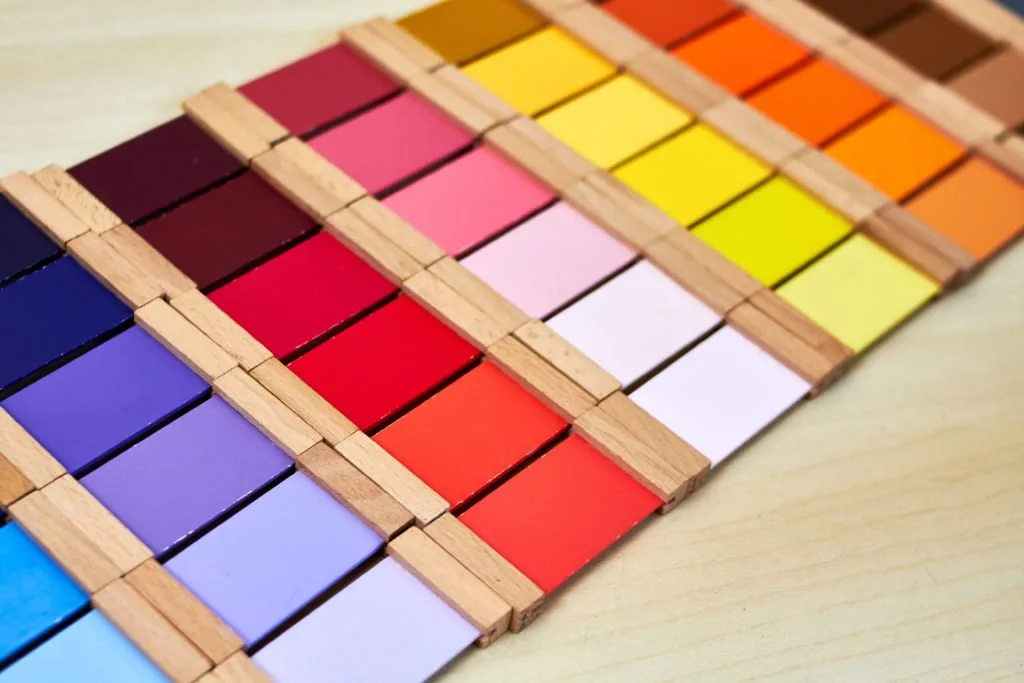
Auditory (sound)
Being able to differentiate one sound from another is an important skill.
Learning language, intonation, music, etc. all rely on good listening skills and the ability to differentiate sounds and volumes.
Hearing is one of our most important senses, as it's the sense that stimulates our brains the most and connects us to the world around us.
Examples of Montessori auditory activities:
What sensory activities do you enjoy in your home that involve these nine senses?
Cheers and don't forget to subscribe!

Arunakumari
Thursday 9th of June 2022
Thank you so much